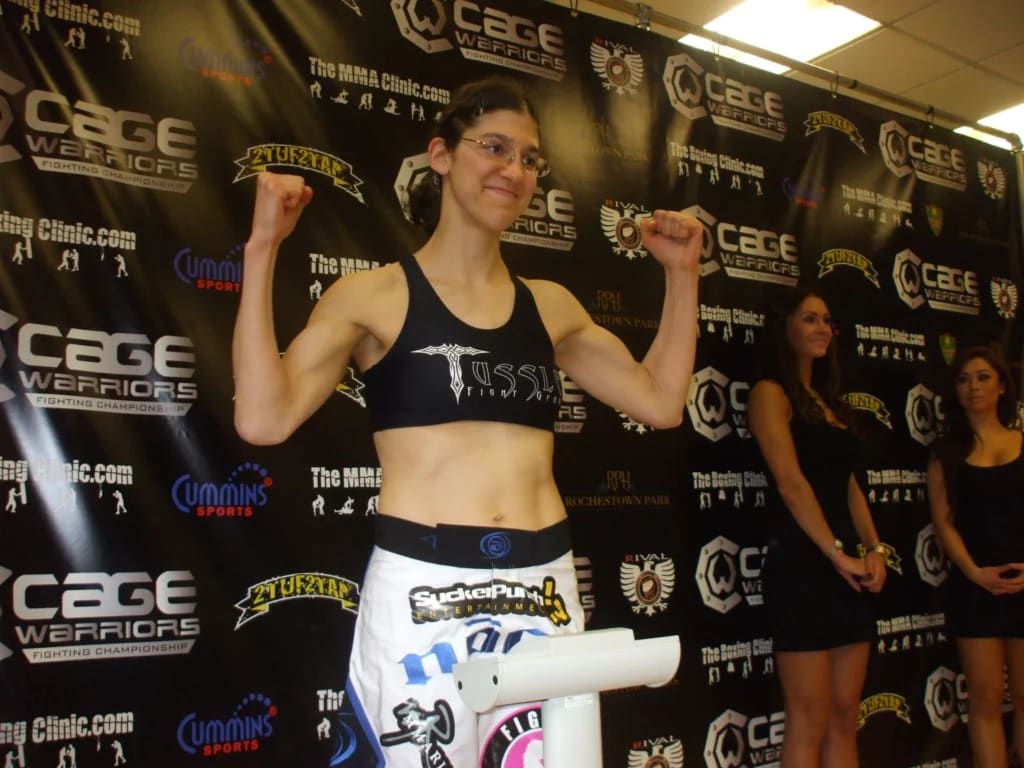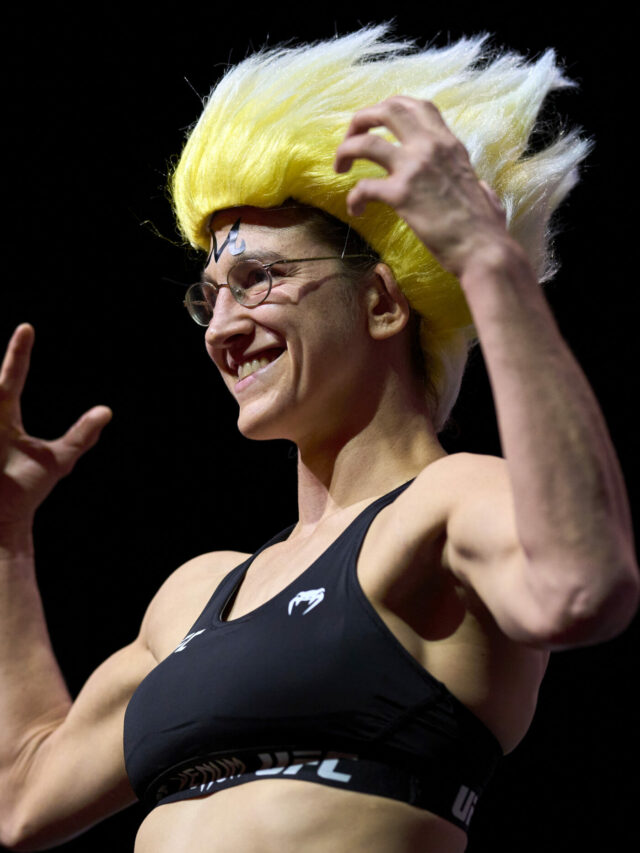Charles Oliveira’s missed weigh-in ahead of his title defence last weekend has thrown the spotlight back on how UFC fighters cut weight before a fight. Women’s MMA pioneer Roxanne Modafferi offers up her own experience.
Making weight didn’t used to be a science but it is now.
When mixed martial arts was born, weight classes didn’t really exist. The UFC introduced two weight classes in 1997: heavyweight (over 200 pounds) and lightweight (under 200 pounds). After 2000, the Unified Rules were created and various state bodies started making efforts to sanction rules. Numerous weight classes were introduced, the rules and point system went into effect, and regulation increased.
Japan was ahead of the US when it came to rules and weight classes, and that’s where I started fighting. However, nothing was world-wide and completely unified yet. When I debuted in 2003 in Japan, I fought at 61 kilograms, which is about 135 pounds. Even their weight classes seemed not set in stone.
There was some confusion surrounding my second fight in 2004, where I was told “You’re at 62? Oh that’s fine,” but it wasn’t fine when I showed up, so I had to go run around the venue and spit in the bathroom sink for an hour.
I fought for the “Women’s Middle Weight Championship” in 2005 for IFC, which was 135 pounds. Then, I became the “Fatal Femme Fighting Lightweight Champion” in 2008, also at 135 pounds. In 2001, Japan made the flyweight division but it didn’t really take off in America until around 2010, when the WEC made the men’s flyweight division.
Water weight
People used to fight at their walk-around weight until wrestlers started entering the mix. Wrestlers brought extreme water weight cutting to the sport, by dehydrating themselves, stepping on the scale, and then showing up huge and hydrated the next day to fight.
Their considerable size and strength advantage made it necessary for everyone to try and follow suit if they were to keep up.
I was a happy bantamweight at 135 for the first half of my career. I walked around at 140 pounds, sweated out a few pounds of water by jumping rope, and didn’t eat breakfast or lunch to make weight.
Those days ended around 2010. I felt myself starting to get muscled around, so my manager suggested I drop to flyweight.
The biggest problem is figuring out how. I had zero instruction, so I thought I was supposed to just not eat food after training to lose fat. I ended up losing muscle and strength, along with my next five fights.


By the time I fought Antonina Shevchenko in Russia in 2019, I had figured out my best method and felt great. Much like in the past, my every-day weight was about 140 pounds. I tried to diet to hit 137 the week before my fight.
This time, I cut out sodium and drank a lot of water to flush my body so it would retain less water. Then I sweat out 12 pounds of water, partly the night before and the remainder weigh-in morning. My body composition was completely different.
How do UFC fighters cut weight?
Now, teammates talk about water loading, salt cutting, and hot-tubbing. But wait, what about getting all the nutrients and proper rehydration afterwards? Every fighter has a different style of dieting and weight-cutting that suits them best, so coaches and teammates have to help them find out what that is. There are also many different body types and everyone reacts differently.
My body reacts well to salt cutting. I’m able to sweat out a lot of water weight while sitting in a hot bath tub. That does not work well for my best friend Serena DeJesus. She doesn’t tolerate the tub – she’d rather combo sauna with a treadmill or bike. I hate the sauna and feel crappy if I go in.
There is no completely right way to cut weight, but there are certainly wrong ways.
She also uses a keto diet. My fiancé also feels great with keto. I can’t – I need carbs.
There is no completely right way to cut weight, but there are certainly wrong ways.
One example is trying not to drink water much at all an entire week before your fight. I’ve seen someone not drinking and sweating out water over a week before the fight. It’s unnecessary so early before weigh-ins.
Missing weight
Weight control has become so complicated over the years. If something is off, you’re playing with numbers and you might miss weight. There are a myriad of reasons why people miss weight:
- Some women experience up to 10 pounds of water retention (bloating) around their menstrual cycle
- Metabolism systems can malfunction due to extreme fluctuation
- Some fighters accept last-minute fight offers, which means they don’t have time to prepare.
Fighters should either be able to make weight, or move up a weight class. Even for last-minute matches, sometimes they’re done at higher catch-weights. I respect those who make a move up. It’s healthier for them anyway. If a fighter wants a weight advantage, they take risks to cut down to a smaller division.
There are many opinions floating around about the consequences of missing weight. As it stands now, a percentage of the purse is taken from the fighter who missed. Differences in weight can impact the fight. Money does not.
Consequences
I believe that if someone misses weight by a pound or more, they should lose a point from round one in addition to losing a percentage of their purse. If they miss by a tiny margin, who’s to say if the weight will affect the fight or not? I’m not entirely sure, but I would like there to be another consequence in addition to the purse reduction.
Sometimes, the fighters claim there is an issue with the scale, or someone’s holding onto the towel used to cover them if they have to strip down naked. This would make them lighter on the scale. Cameras should also be present during weigh-ins so nobody can cheat. If accidents happen, footage can be reviewed and analyzed for fairness.
The bottom line is weight classes were created for a reason.
The bottom line is weight classes were created for a reason. Some weight misses are innocent, some are due to incompetence.
However, most people honestly try their best to make weight. Fighters should have access to information and be given as much guidance as possible to try and reduce the chance of hurting themselves when trying to meet that goal.


